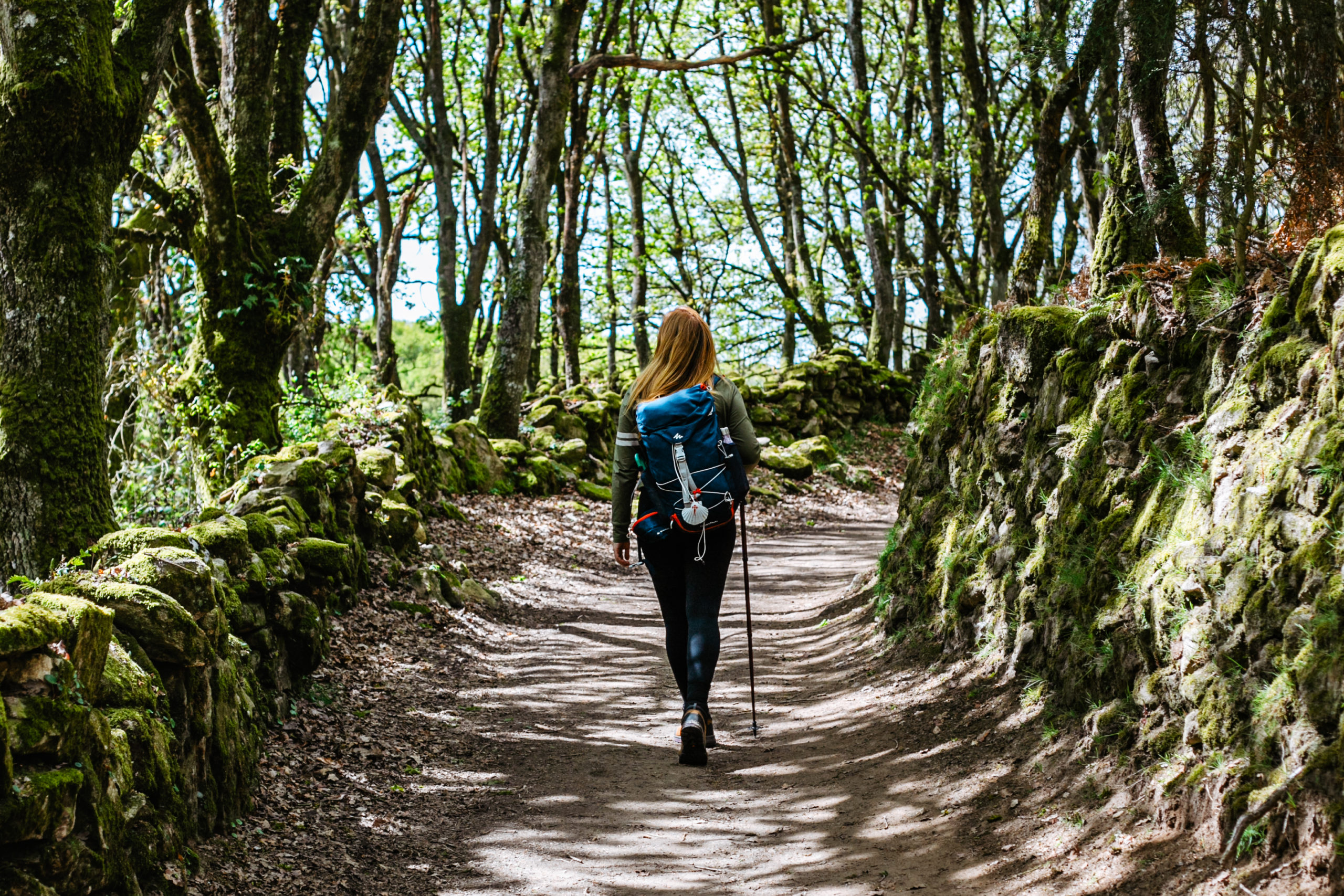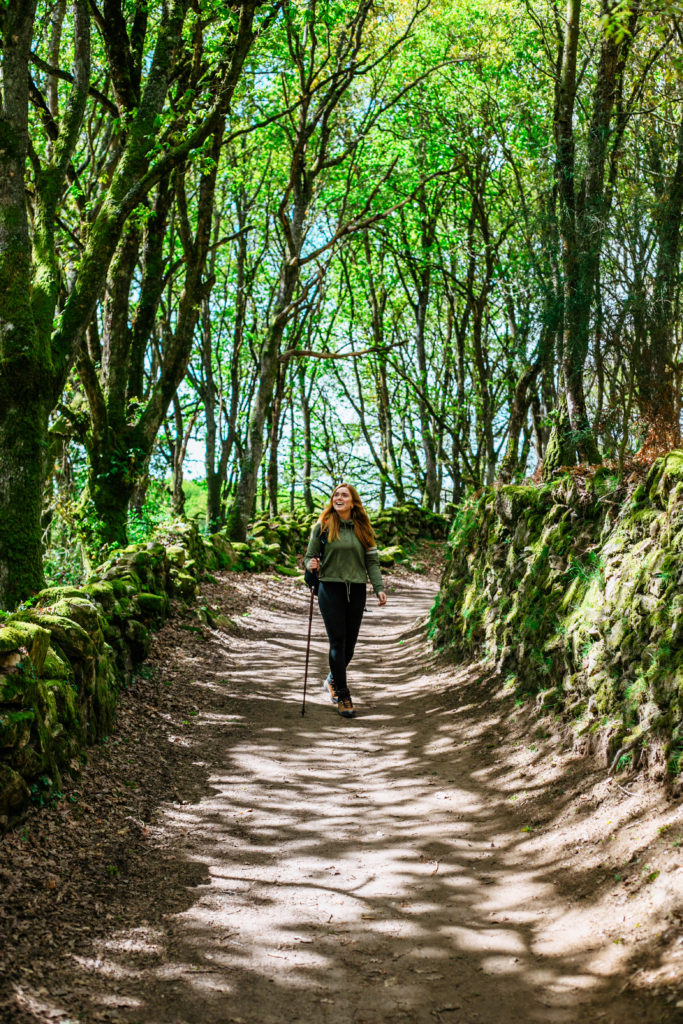Hiking the Camino: Everything you need to know


The Camino de Santiago, (or St James Way in English) is a network of historical pilgrims’ ways stretching across Europe, that all lead to the shrine of the apostle Saint James the Great in the Santiago de Compostela cathedral in northwestern Spain. In 1993, these routes were declared a UNESCO World Heritage Site. Hundreds of thousands of people walk the Camino each year, walking anywhere from 120km to 1000km! As I’m sure you can imagine, it is not an easy feat to accomplish. Although you don’t need training to complete the Camino there are a few things to know to make your journey more smooth. As someone who recently completed the French Way I’m going to share everything you need to know about hiking the Camino.


How long is the Camino de Santiago?
There are countless ways making up the Camino de Santiago, including over 83,000 km of routes through 29 different countries. The furthest point in Europe is 4500 km (2,796 miles) away in the city of Iasi in Romania.
However there are only seven well-established Caminos:
- Camino Frances (The French Way) 780km
- Camino Portugues (The Portuguese Way) 620km
- Camino del Norte (The Northern Way) 466km
- Camino Primitivo (the Original Way) 315km
- Via de la Plata (the Silver Way) 1,000km
- Camino Finisterre-Muxía 118km
- Camino Ingles (the English Way) 120km
The most popular is the French Way. Starting in Saint Jean Pied de Port, France, the French Way travels 780km (485 miles) west through the Pyrenees to Santiago de Compostela in Spain. Over half of all pilgrims chose the French Way, and one in every four start in Sarria.
Most pilgrims take between 30 and 35 days for walking the Camino. But you can also do a final section over 5/6 days.
What is the minimum distance you need to do to complete the Camino?
In order to earn the Compostela you need to walk the last 100km of a Camino, finishing in Santiago de Compostela. The Compostela is a certificate that certifies that you have completed the pilgrimage.
As I mentioned before, many pilgrims chose to do the route from Sarria to Santiago de Compostela which is just under 120km. This usually takes 5 to 6 days when done consecutively.
You can walk as many or as little kilometers per day as you like. But most people tend to walk around 20km a day.
Do I have to walk the Camino?
Although the majority of pilgrims opt for walking the Camino, its it designed to be travelled in three ways: walking, cycling and on horseback. However if you choose go by bike you will need to cycle at least 200km to get your Compostela.
What should I wear to do the Camino?
As you will be walking around 20km a day one of the most important things to consider are what shoes to wear. You want them to be comfortable and waterproof and ideally they should cover your ankles. If you have bought new hiking shoes I recommend breaking them in before to make sure you don’t get blisters (whatever you do don’t wear them completely new!)
I would go for a well known brand like Karrimor, Mountain Warehouse, Columbia or Merrell. Although I was happy with my Forclaz boots from Decathlon and my partner wore the Adidas Men’s Terrex Free Hiker GTX Trail Running Shoe. Make sure to pair these with suitable hiking socks.
What you will wear on the Camino will depend on the time of year you do it, and where you start from. Some routes might take you through snowy mountains, whilst others are along warm coastlines. I recommend packing layers and waterproofs as the weather can change a lot. Your first layer should be breathable to quickly remove sweat from the skin. The second layer insulating and breathable. The third layer thick and warm. The fourth layer wind and waterproof. Don’t forget to bring waterproof trousers as well as your waterproof coat.
What to pack for the Camino
You need to pack smart for the Camino, don’t bring any unnecessary weight. What ever you do don’t overpack your backpack. Your bag shouldn’t weigh more than 10% of your body weight. Hip straps on your backpack will also be a huge help as they can help to take some of the weight off of your shoulders.
Clothes
I found multiple places to do laundry along the way, so you don’t need to worry too much about bringing extra clothes.
- Waterproof hiking boots
- Small lightweight shoes for wearing post-Camino
- 2 x Hiking socks (breathable, quick dry and seamless)
- Leggings or hiking trousers (I wore Stronger leggings)
- Hiking shorts (if you are going during the warmer summer months)
- Waterproof trousers
- 2 x Breathable sport tops
- Fleece
- Warm jumper or coat
- Waterproof coat with hood
- Hat and sunglasses
Washing
- Sun cream (if you’re going March – October)
- Shower items (I would bring mini bottles to save on weight)
- Fast drying towel
Medical
- Compeed blister plasters (prevent your shoes from rubbing on your blisters)
- Magnesium supplements (this was recommended to me by a pharmacist, to help prevent sore muscles)
Miscellaneous
- Energy snacks
- Sleep sack (if you are planning on staying in hostels)
- Reusable Water bottle
- Pilgrim passport (you can get this at a pilgrim’s office, an albergues or the town hall at your starting point)
- Pilgrim shell (there are many local shops selling these)
Do I need to carry my own bag?
I had thought about doing the Camino for a long time, but as someone who travels for a long period, I usually have a large suitcase. I was overjoyed when I heard that there is a luggage carrying service! This service picks up and drops off your bag at your accommodation over the various stops for only €4 per stop. This way you can bring just the main essentials with you during the day.
I saw a few different companies along the Camino offering this service, such as Camino Facil, El Camino con Correos and Mochilas Estrada.
How can I book the Camino?
One of the great things about the Camino is that there are many ways to do it. If you want to book everything in advance then you can go through an agency or book all the hotels yourself. Alternatively you can wing it and stay in hostels along the way.
Camino on a budget
The most common way for Pilgrims to travel is on a budget. Each town will have at least one hostel (either private or municipal). You can’t book these in advance, so you need to make sure that you don’t arrive too late at your next town, especially if you’re travelling during high season (summer). A bunkbed in a dormitory costs around €8 to €12. You will need your Pilgrim Passport in order to stay in a hostel to show that you are doing the Camino.
You can bring a sandwich to keep down costs. Most towns also offer a Pilgrim menu where you can get a 2 or 3 course menu for €10-13.
COSTS: Around €20- 30 a day
Staying in Hotels along the Camino
It is also possible to do the Camino in a bit more comfort by staying in hotels along the way. I recommend booking these in advance. You can either work out the route you want to do yourself, then book everything, or you can go via an agency.
We went through the agency Mundiplus. The popular Sarria to Santiago route starts at €440 per person for bed and breakfast. By going through an agency you can tell them how much you want to walk each day, and then they will work out a route for you.
If you want to book everything yourself, a double room costs around €40-120 a night, depending on where you stay and the season you go. Below I’ve linked the hotels that I stayed in from Sarria to Santiago de Compostela.
Sarria to Santiago Camino hotels:
Sarria – Hotel Alfonso IX
Portomarín – Guesthouse el Padrino
Palas de Rei – Hosteria Calixtino
Melide – Hotel Carlos 96
Arzúa – La Casona de Néné
O Pedrouzo – Hotel O Pino
Santiago de Compostela – Hospedería San Martín Pinario
Do I need a permit?
The Camino is open for everyone and anyone, so NO you do not need a permit!
Are there places to buy food along the Camino?
As each section of the Camino has a few thousands of Pilgrims passing by every day, it makes quite good business! So you should be able to find a few restaurants and cafe’s along the way where you can get drinks/food and use the toilet.
Can I get lost along the Camino?
It is very hard to get lost on the Camino. The Spanish government has invested a lot of money into the Camino and you will find signs at every turn showing you the way. They also help you to know how many km you have left.
How do I get my Pilgrim Certificate?
In order to get the Pilgrim certificate, or ‘Compostela’, you need to walk at least the last 100km of a way finishing in Santiago de Compostela.
In order to show that you’ve done this you need to stamp your Pilgram passport at least twice a day to track your progress. This can be somewhere along the way (churches / restaurants / pop up stands) and then your hotel/hostel. You can get your Pilgrim’s Passport or Card at a pilgrim’s office, an albergues or the town hall at your starting point.
I hope this article helps to prepare you for your Camino. It is truly an incredible experience, and no matter how far you walk, or which Way you take I’m certain that you will have an unforgettable time. I’ve tried to include everything you need to know about hiking the Camino, but please feel free to ask any additional questions in the comments. Buen Camino!
Like this post? Pin it for later!
Recent Posts
Diamond Beach Iceland : Ultimate Guide
Diamond Beach in Iceland is a breathtaking wonder where glistening icebergs meet the black volcanic…
Top Things to Do in Reykjavik Iceland
I first visited Reykjavik in 2016 and instantly fell in love with its charm and…
Top things to do in Extremadura Spain: A Perfect Road Trip Itinerary
If you're dreaming of a scenic Spain road trip filled with stunning nature, rich history,…
Ultimate Norway Road Trip Itinerary: Best Places to See Near Bergen
Norway’s stunning natural beauty makes it one of the best destinations for a road trip,…
Ultimate Guide to the Trolltunga Hike in Norway
If you are looking to do one of the best hikes in Norway, then you…
Best things to do in Stowe, Vermont in the Fall: A Perfect 3-Day Itinerary
If you're dreaming of a quintessential New England fall, look no further than Stowe, Vermont.…

